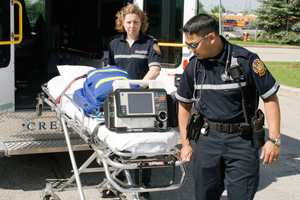What is breast cancer?
Breast cancer is a kind of cancer that develops from breast cells. Breast cancer usually starts off in the inner lining of milk ducts or the lobules that supply them with milk. A malignant tumor can spread to other parts of the body. A breast cancer that started off in the lobules is known as lobular carcinoma, while one that developed from the ducts is called ductal carcinoma.
Breast cancer is the most common invasive cancer in females worldwide. It accounts for 16% of all female cancers and 22.9% of invasive cancers in women. 18.2% of all cancer deaths worldwide, including both males and females, are from breast cancer.
Breast cancer rates are much higher in developed nations compared to developing ones. There are several reasons for this, with possibly life-expectancy being one of the key factors - breast cancer is more common in elderly women; women in the richest countries live much longer than those in the poorest nations. The different lifestyles and eating habits of females in rich and poor countries are also contributory factors, experts believe.
What causes breast cancer?
- Getting older
- Genetics
- A history of breast cancer
- Having had certain types of breast lumps
- Dense breast tissue
- Estrogen exposure
- Obesity
- Height .
- Alcohol consumption
- Radiation exposure
- HRT (hormone replacement therapy)
- Certain jobs
- Cosmetic implants may undermine breast cancer survival
Signs of Breast Cancer:

- A lump in a breast
- A pain in the armpits or breast that does not seem to be related to the woman's menstrual period
- Pitting or redness of the skin of the breast; like the skin of an orange
- A rash around (or on) one of the nipples
- A swelling (lump) in one of the armpits
- An area of thickened tissue in a breast
- One of the nipples has a discharge; sometimes it may contain blood
- The nipple changes in appearance; it may become sunken or inverted
- The size or the shape of the breast changes
- The nipple-skin or breast-skin may have started to peel, scale or flake
Diagnosing Breast Cancer
- Breast exam
- X-ray (mammogram)
- Beast ultrasound
- Biopsy
- Breast MRI (magnetic resonance imaging) scan
Job Description: EMT's job is to rush to the scene of an emergency, provide immediate medical care, and get the patient to the hospital. When EMTs arrive at the scene, their first job is to figure out what kind of injury the patient has and how serious it is. At the same time, they must try to determine if the patient has any pre-existing medical conditions, such as epilepsy or diabetes, or is taking any medication that may cause complications. Working quickly, they give the patient whatever care and treatment they can, until they reach the hospital. This could mean anything from assisting the patient’s breathing to bandaging wounds. In some cases, they confer with doctors over the radio. Once they get to the hospital, paramedics brief emergency staff on the patient’s situation and medical history, and help with pre-admittance treatment.
Education/ Training Needed: Formal training is necessary to become an EMT or paramedic. Programs are offered by police, fire, and health departments, hospitals, and 2-year colleges. Although requirements vary, applicants must generally be at least 18 years old and have a high school diploma or the equivalent, a driver’s license, and CPR certification. EMT-Basic training provides the first level of skills required to work in the emergency medical system. EMT-Basic requires the student to complete a program that includes between 100 and 150 hours of classroom work, depending on the state. A period of on-the-job training in an ambulance or hospital emergency room must also be completed. After completing an EMT basic training program, graduates must pass a written and practical exam administered by the National Registry of Emergency Medical Technicians (NREMT) or their state certifying body. EMT-Intermediate training requirements vary from state to state. Training commonly includes 35 to 55 hours of additional classroom instruction, beyond EMT-Basic coursework, and covers patient assessment, as well as the use of advanced airway devices and administering intravenous fluids.
Wages: EMTs are normally paid on an hourly basis, anywhere from about $10 to $26 an hour. The median annual earnings for all EMTs are about $31,000, with most earning between $20,000 and $53,000 a year.
Source: https://www2.careercruising.com/careers/profile-at-a-glance/318



















